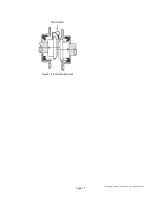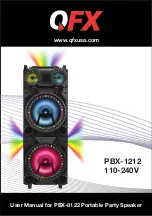
Page 5
Copyright © 2012 Kato Engineering, Inc. All rights reserved
Construction and Operating Principles
Stator
The stator consists of the supporting frame, core, and armature windings.
The stator core is made from laminations, thin sheets of electrical steel,
which are stacked and held in place by steel endrings and support
bars. The rings and bars are welded to or are part of the steel frame.
Base mounting plates are welded to the bottom of the frame. The base
mounting plates allow the assembly to be mounted on the genset base.
The windings (coils) are constructed of layered and insulated copper
wire. The coils are inserted in the core slots, connected together, and
the entire assembly is vacuum-pressure impregnated with resin. Stator
leads terminate in standard connection lug or strap terminals for ease of
connection to the load.
Rotor
The main rotor assembly is the revolving fi eld. It consists of windings
in a core, which is in turn mounted on a steel shaft. The exciter armature
assembly and optional permanent magnet generator (PMG) rotor are also
mounted on the shaft as are the fan(s) and other optional accessories.
The core consists of laminations, thin sheets of electrical steel, which are
stacked together. The core makes the salient poles (four, six, eight or 10).
With six or more poles, the poles are typically attached to a center hub.
The rotor windings consists of insulated magnet wire wound around
each pole. V-blocks between each pole keep the rotor windings in place.
Damper windings consist of copper or aluminum rods that are inserted
through each pole surface and are brazed to copper or aluminum damper
end plates at each end of the lamination stack. The end plates are brazed
to adjacent poles to form a continuous damper winding.
The ends of the
windings are supported with bars or aluminum pole shoes. The rotor
either has resin applied during the winding process or is vacuum-pressure
impregnated with resin.
The shaft is made from high-strength rolled or forged steel and machined
to accommodate all the rotating generator components. Keyways in
the shaft ensure precise positioning of the rotor, exciter armature, and
optional PMG rotor as well as drive couplings. On the exciter side, the
shaft has a slot or hole in its centerline for running the revolving fi eld
leads to the rectifi er.
Bearings
The generator may contain either one or two bearings. Bearings are
typically ball or roller type and are regreaseable bearings, which contain
fi ll and drain ports for easy lubrication. Sleeve bearings are optional
on some designs. A supplementary instruction will be included in
NOTICE: For specifi c lubrication
instructions, always refer to the bearing
lubrication sheet that came with your
manual or the lube plate on the generator.
Unauthorized lubricants may result in a
bearing failure.
NOTICE: Generators equipped with sleeve
oil bearings must have oil added to the
bearing prior to rotation. Failure to comply
will result in bearing damage. See the
bearing manual.






































